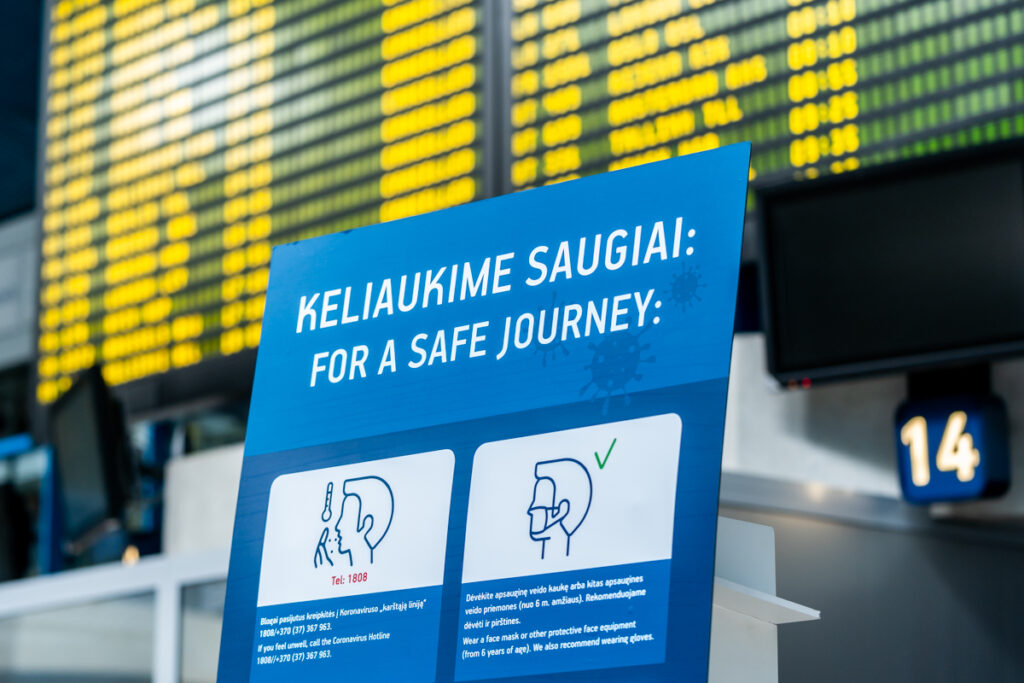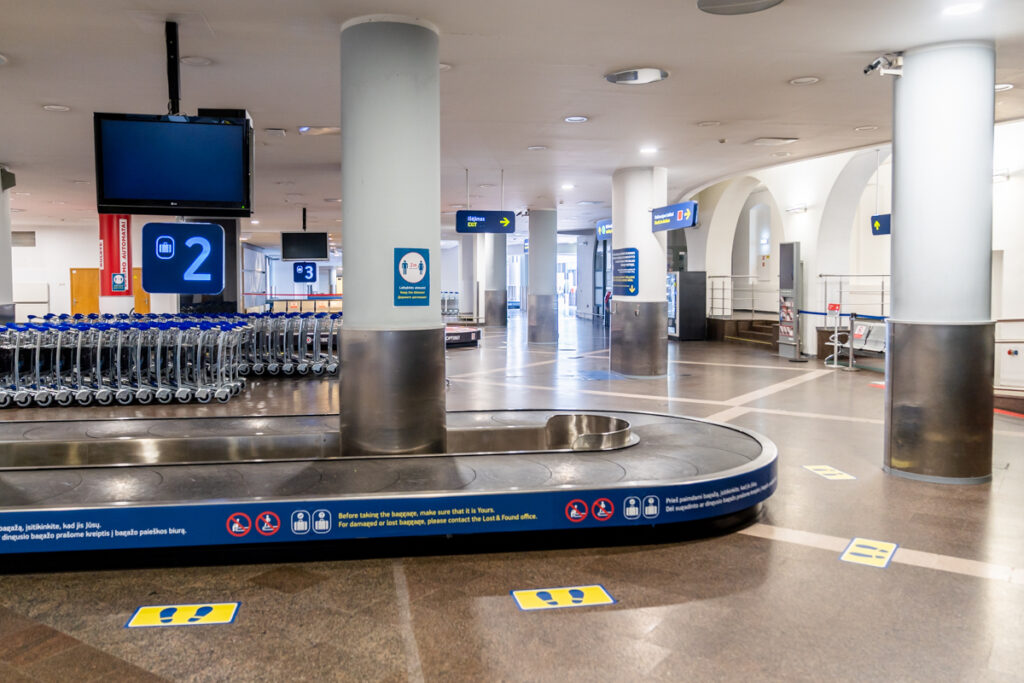
Almost 2.5 million passengers passed through Lithuanian airports in 2021, a 37% increase over the 2020 figure of just over 1.8 million. In 2021, aviation specialists confirmed that aviation flows at Lithuanian airports had seen some increase across nearly all of the country’s major categories, with the active recovery phase kicking off in the middle of the year.
European and Lithuanian aviation sector trends in 2021
According to the head of the Aviation Services Division at Lithuanian Airports, Aurimas Stiklinas, “in 2021, the European aviation market was still forced to react to the pandemic and the changing means of managing it. However, the aviation sector has been flexible enough to adapt its activities to emerging challenges. The airlines have been very active in monitoring the situation, adapting to the existing demand, and some companies have even managed to increase their business volumes by competing more aggressively in the market… with the harmonisation of travel requirements in the middle of the year, we have seen the aviation sector recovering at a much faster pace than before, as illustrated by the huge increase in passenger and flight flows since July. In the second half of 2021 alone, the number of passengers at airports reached 2 million”.
In addition, he stated that the introduction of the international COVID-19 passport at the European level has had a significant positive impact on the recovery of the European aviation sector. The European aviation sector has also benefited greatly from the large-scale support packages provided by States to maintain airline operations and compensate for losses. 1.9 million passengers passed through Vilnius International Airport in 2021, a 45 percent increase over the previous year, while Kaunas International Airport handled nearly 490 thousand passengers, a 32 percent increase over the previous year, and Palanga International Airport handled 86 thousand passengers, 31 percent less than in 2020. The figures show that even the obstacles presented by new strains of the virus have not proven to be a significant factor in halting aviation, and the supply of airlines to the market has maintained its increasing trend.
The results should be interpreted with the understanding that the beginning of last year was extremely slow due to the extremely stringent travel restrictions in Europe, and it was not until the middle of the year that a significant improvement in the situation occurred. When comparing statistics with the pre-pandemic period, Lithuanian airports were among the fastest recovering airports in Europe.
Not only did the number of passengers increase, but so did the number of flight. In 2021, Lithuanian airports handled more than 34,000 flights, representing a 15% increase over the previous year’s. Vilnius International Airport handled more than 25,000 flights (a 21 percent increase over the previous year), Kaunas International Airport handled approximately 7,000 flights (a 12 percent increase over the previous year), and Palanga International Airport handled more than 2,000 flights (24 percent less). The average load factor improved last year, with low-cost carriers filling an average of 61 percent of seats, compared to 46 percent for traditional airlines.

Last year, the share of cargo moved through Lithuanian airports increased by 3 percent as compared to 2020, with the 20,000-tonne threshold being reached in 2021. In terms of the country’s overall accessibility, the number of destinations served by Lithuanian airports in 2021 surpassed the number of destinations served prior to the epidemic. In 2021, 94 direct regular destinations were offered, compared to 72 in 2020 and 92 in 2019.
Predictions for the year 2022
Stikliūnas further stated that “security will remain our priority next year. The pandemic is not over yet, so our goal is to continue to make safe travel possible, and we will focus on this. Taking into account the needs of Lithuanian business and tourism organisations, this year we will strive to further develop connectivity with the major aviation hubs – airports, as well as to adapt the existing ones and to look for new ways to stimulate the inbound passenger flow, we will adjust the common promotional strategies and packages for the carriers, but from the overall point of view, we will stick to the chosen and successful path – to develop the activity of the base carriers. We predict that the number of travellers in the network of Lithuanian airports will reach 4.2 million in 2022, which could represent a 70% growth compared to 2021. We also expect to achieve a 43% growth in the number of flights in the category, thanks to the harmonisation of travel rules and the continued consistent implementation of our flight promotion strategy. We plan that Lithuanian airports will be able to handle almost 50,000 flights in 2022”
